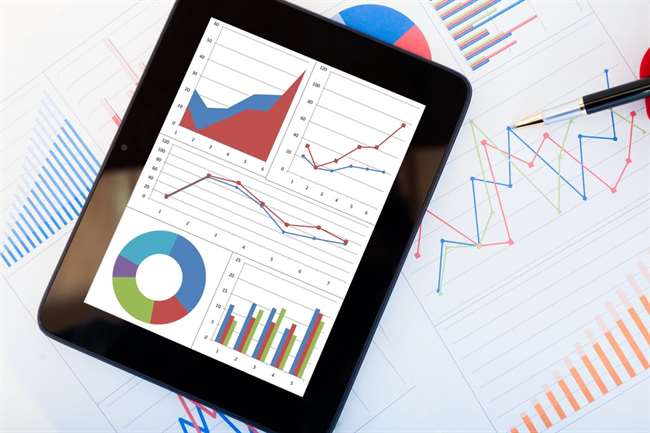Content
Journal entries are prepared manually by analyzing the POS files received by various locations. Then all the Cash, credit card Amex transactions are reconciled with the bank statement to clear the transactions.
- Although most businesses run their process through tax processing software, there is still a significant amount of manual work involved.
- Using an RPA can make account opening a direct and straightforward process that both you and your customers will appreciate.
- Establish stop points where your team can review the work and verify that all is working smoothly.
- You might have heard about RPA in finance; you might only know robots from science fiction movies.
- With little- and no-code solutions, this RPA platform provides you with everything that you need to mind the gap.
- So now you know what RPA is, learned how RPA is used in finance, saw some potential uses for RPA, read some 2021 RPA banking use cases, and even learned how to implement it into your business.
With a strong team of over 800 tech enthusiasts, we provide RPA solutions that can automate your Fintech business processes seamlessly. Our team takes up every step from conceptualization to deployment with the utmost rigor and enthusiasm and ensures we exceed your expectations. 80% of the finance leaders have either implemented or are planning to implement robotic process automation in their business processes, as per Gartner.
What is RPA?
This can consume valuable time when logging in and out of various systems. Jocelyn Ho is the founder of Newlance Consulting, a digital marketing consultancy in Paris.
Is RPA here to stay?
Statista believes that the RPA industry will be worth $3.1 billion by 2019 and $4.9 billion by 2020. So, it won't be wrong to say that RPA is here to stay long and rule in the disruptive market space!
Whether dealing with the financial sector or not, the reporting of taxes is always annoying. Just like processing loans, the process of mortgage lending can waste you lots of time. You can easily automize document processing, loan initiation, and quality control. (Are you noticing a pattern here?) It usually consists of extracting data from many files and assessing whether someone should get a loan. RPA can be set up to analyse historical data, collate financial statements, and generate forecasts, freeing the skilled workforce to create and execute strategies. RPA makes it simple to record journal entries automatically, reconcile accounts, and manage everyday transactions while maintaining a thorough audit record. RPA modernises the vendor invoice collection and allocation tasks by functioning on a predefined set of rules.
Position your finance and accounting department for transformative business impact
It is well-known as a business function for repetitive, time-consuming tasks such as data entry, reporting, cross-checking, and record-keeping, which is ideal for RPA bots. RPA comprises software robots, colloquially referred to as bots, representing a reusable task and process automation pattern.

From ideation to launch, we follow a holistic approach to full-cycle product development. Prepare the Data – RPA relies on accurate and structured data to execute processes properly. Ensure you know where data must be extracted from for the RPA solution to do its job. Document Requirements – Take an objective look at the processes listed above. Additionally, document the steps involved and the relevant parties so that when you deploy RPA, everyone can be on board.
Accounts Payable
Our prebuilt automations and ready-to-go connectors can give you a head start on a more innovative future for finance and accounting. Auditing should undergo automation at a slower pace so you can assess its effectiveness and adapt as needed, but its effect can be impressive. With the right tools, you can streamline many of the most time-consuming tasks in auditing while improving data visibility and process outcomes. At the same time finance robotics must be scaled out of shared services and into other finance subfunctions such as procurement and tax. Performing the tedious tasks of timesheet validations, deductions calculations, tax calculations, overtime payouts, etc. can be managed by RPA bots with zero errors and delays. Payroll processing is one of the most important processes for any business. Timely and accurate processing leads to building a happier workforce that, in turn, leads to the building of a satisfied customer base and a successful business.
What can RPA not do?
- Estimated reading time: 2 mins.
- Non-digital, unstructured data: Basic RPA fails in face of such data.
- Data exceptions:
- Change Management:
With the future of developing bots with no/low coding, the RPA implementation will be much more efficient and cost-effective. When software robots take over rules-based and repetitive finance and accounting tasks, you empower your team of experts to take on a more strategic, consultative role. As the tasks involved are repetitive in nature, it is time-consuming and error-prone. RPA integrated with ML and AI can take up the tedious and monotonous task of performing repetitive tasks of generating invoices and POs. This will keep a track of comparing the raised invoices against POs keeping the audit in place on a real-time basis. The client processes large amounts of cash and credit card transactions in several locations every day. The management team must interpret these transactions to provide real-time financial performance analysis.
Introduction RPA in Finance and Accounting
Financial planning is the analysis of a company’s current cash flows, its targets and market dynamics to plan future financial decisions. My company has helped hundreds of companies scale engineering teams and build software products from scratch. How will you use the extra time, the extra money, the extra employee enthusiasm? Some people may be scared of AI and robotic workforces, but the fact of the matter is, they can help you unleash your creative business potential.

Projecting short- and long-term financial strategy requires a lot of prep work and research. FP&A software uses existing financial data to automatically create budget models. Experts can visualize and experiment with an unlimited range of scenarios, without the risk of human error. With a spend management solution, businesses pay for each subscription with a unique virtual card, and monitor and manage all current subscriptions in real-time from one centralized platform. Employees can easily request a specific SaaS budget from their managers, who can approve these requests in a click. With RPA software solutions, finance teams can finally get ahead–not just catch up–throughout the fiscal year. RPA bots are expected to dominate transactional tasks in the finance sector in the short term.











